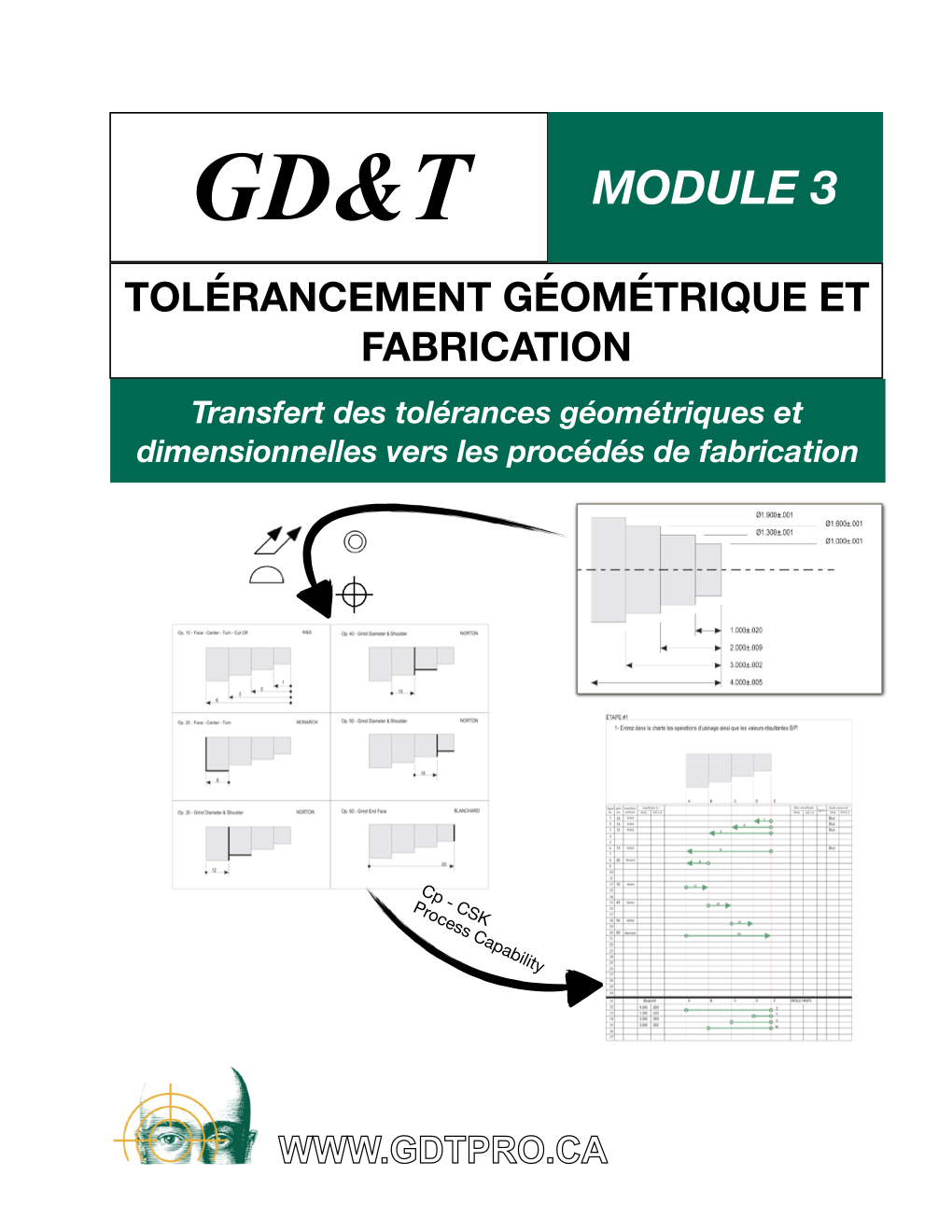TRAINING DURATION: 2 days (16 h).
PREREQUISITE: PREREQUISITE: Module 1, or a very good knowledge of GD&T as per ASME Y14.5.
CONTENT:
- Review of GD&T system, with a particular emphasis on the interpretation of the DRF (Datum Reference Frame), the control of surfaces with profile and the control of dimensional elements with position.
- Review of the tolerance chain technique and tolerance accumulation methods (conventional, statistical).
- Identification of the manufacturing references at each step of the process flow chart.
- The tolerance transfer technique.
- The tolerance chart.
- SPC control charts, process capability indicators.
- Exercices.
Module 3 is about transferring the dimensional and geometric tolerances from the definition drawing to the process. The methodology presented starts with the analysis of the process flow chart and the identification of the reference surfaces used at each steps of the process. Participants will then learn how to use the tolerance transfer technique to transfer tolerances from the drawings origins to the manufacturing origins.
This is followed by the introduction of a tool called the “tolerance chart”, to identify the chains of tolerance accumulation in the process. We review the SPC tools that are necessary to estimate the process capabilities for each link of those chains of accumulation. Results are analyzed to validate if the conditions for a statistical accumulation are present.
What to do now if the accumulated uncertainty in the process does not meet the quality level required for that product? You will discover that by attending Module 3.
RECOMMENDED TO:
This training is recommended primarily to personnel responsible for planning the manufacturing processes, like manufacturing engineers and technician, from engineering, methods, and QA. Also recommended for all participants in the continuous improvement teams.
